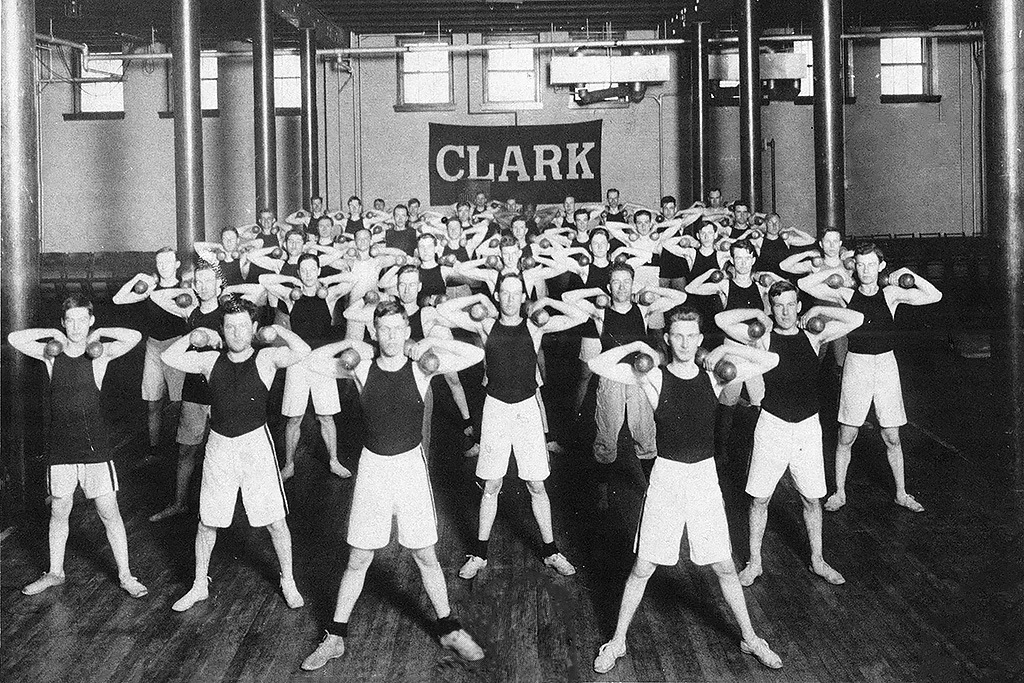
Clark University students have an opportunity to play on 17 different athletic teams, from tennis to rowing, basketball to lacrosse. But one sport is conspicuously absent — football.
With the popularity of the sport on campuses around the country, why is that the case?
It goes back to Carroll D. Wright, the first president of the undergraduate Clark College, which began admitting students in 1902. Wright had strong opinions on extracurricular activities, as noted by Clark professor emeritus and former archivist William Koelsch in his history of the University:
Of course, the life of the student in any age and place is not all study. At Clark, however, the policy from the beginning was that extracurricular activities must contribute to or at least not detract from the academic program. There would be instruction in “hygiene, physical culture and athletics,” but there would be no intercollegiate sports. As President Wright put it in the Preliminary Announcement, “While opportunity will be given for athletic sports, they should in all respects be non-competitive in their character and non-commercial in their aims.” Wright was convinced that intercollegiate sports, particularly football, had become a distraction in American colleges, and although at first some faculty (and a number of students) disagreed with his solution, within a few years, the faculty dissenters, at least, had been brought around to his views. The prohibition against intercollegiate athletic competition was relaxed in 1919, but intercollegiate football remained (and remains) prohibited, and there have never been separate “athletic scholarships” at Clark. The citizens who awaited “a real, live college yell from this part of Worcester” were never to witness what the Worcester Magazine had eagerly anticipated in 1902: “football matches between the rival teams of Clark University and those of Holy Cross and the Worcester Polytechnic.”
Koelsch, William A. Clark University, 1887-1987: A narrative history. Clark University Press, 1987.


